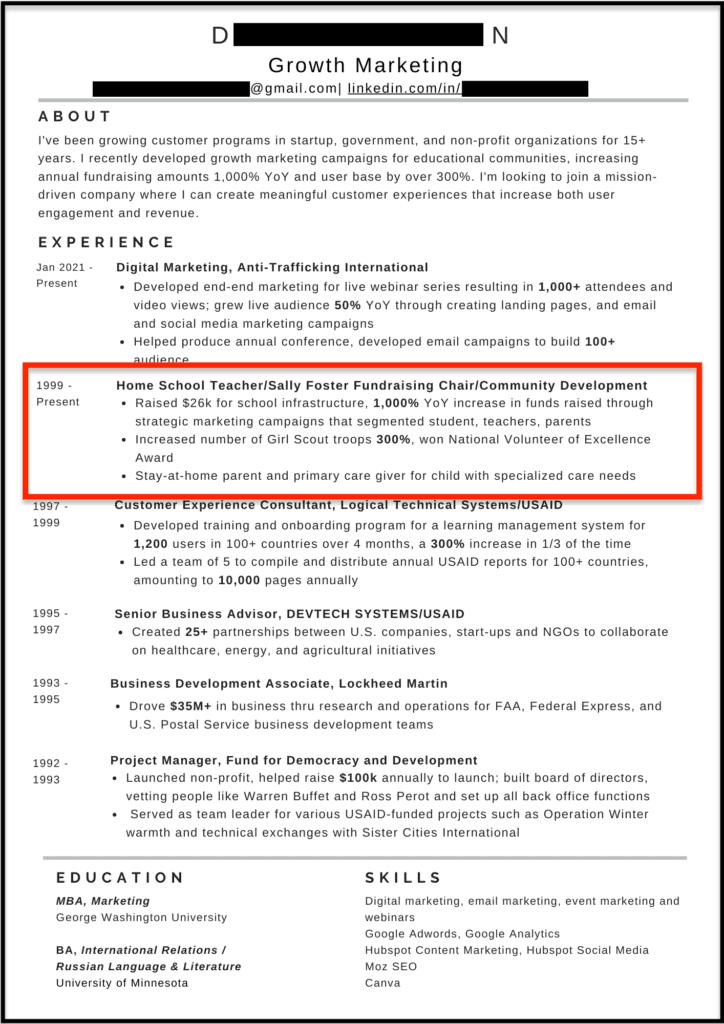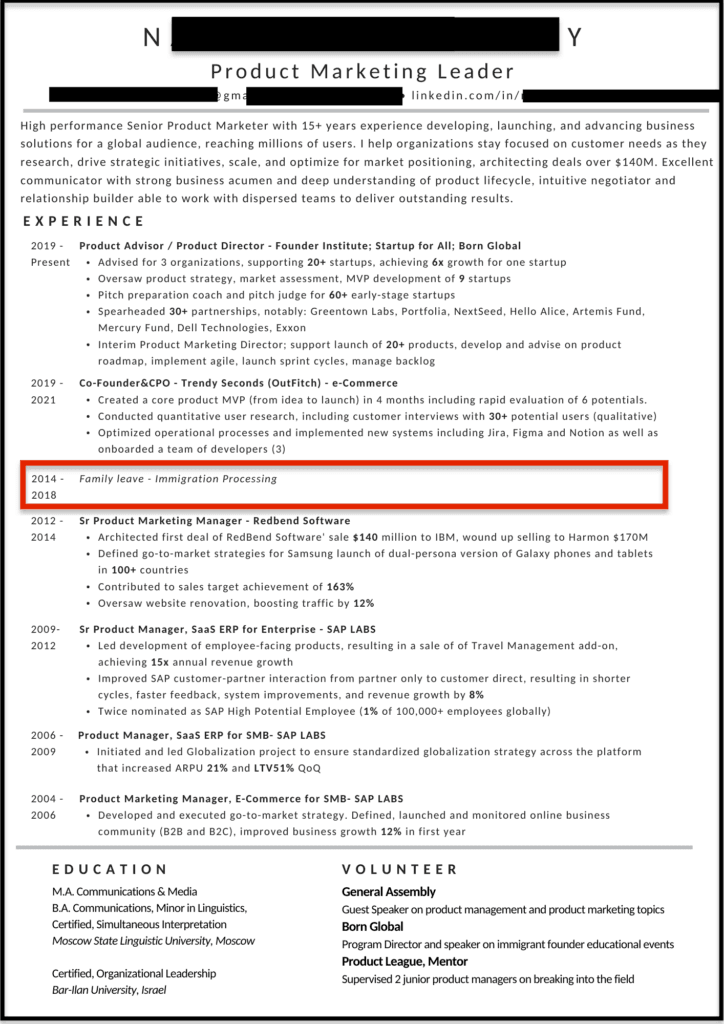I was a stay-at-home mom. When my sons were young, I stepped away from my 10-year advertising sales career to become my family’s primary caregiver and household manager. With no roadmap for my career pause, I took a leap of faith. The days were long and often tedious. And at times, I felt conflicted about how I was spending my time and energy. But to this day, I have zero regrets — my memories of those years are filled with some of my sweetest moments.
After an 8-year break from the traditional workforce, my younger son started Kindergarten. And the next day, I dove head-first into rebooting my career. While I was away, the media and advertising landscape as I’d known it had changed, so I embarked on a crash course to get savvy. But I was confident that the skills and strengths that drove my success in v1 of my career would serve me in v2. Plus, I’d built new skills and grown immensely during my most significant and challenging role ever — motherhood.
Within a few months and after many conversations with people in my extended network, I landed a sales role with a small advertising technology company. And a few months after that, I left for a dream job at Facebook, where I spent eight transformative years. How did I do it? 1) I leveraged my network near and far, connecting with people with whom I hadn’t spoken in years, 2) I was fortunate to encounter leaders who, despite my career pause, were willing to take a chance on me, and 3) I truly believed that I was more capable and empowered than ever and that anything was possible.
By sharing my story, I hope to help normalize career breaks and embolden women to embrace hitting the pause button. So whether you’re taking a break, considering one, or planning your reentry to the workplace, here are some of the lessons I learned along the way.
Cherish the time and have trust in yourself
If you’re taking a pause, trust your decision and honor the time wholeheartedly. This is a precious time for you and your family, so make the most of it. Your capacity, strength, smarts, and skills will not diminish! Trust that you’ll be able to access everything you need and more when the time comes. When I was uncomfortable and conflicted, I worked hard to stay engaged in the experience of being a full-time stay-at-home mom. And I had faith that I would figure out my next move when the time was right.
Keep your interests and strengths alive
If you want to do unpaid or volunteer work during your break, be strategic about your choices. I made a special effort to seek out unpaid projects that leveraged my experience, strengths, and passion points. For example, I wrote restaurant reviews for a friend’s start-up food website and helped with a monetization strategy. I also volunteered my time working for the marketing director of a local youth crisis center, and was part of the leadership team responsible for rebuilding our community playground.
Whatever your choices, take pride in that work, and make it part of your career highlights. Showcase your volunteer achievements using LinkedIn’s recently launched Career Breaks tool, designed specifically to “make it easier for candidates and recruiters to have open conversations around the skills and experiences professionals amass away from the traditional workplace.”
Build a support network
When you embark upon your return to work, invest in a coach to help you clarify your strengths and skills, define what you want, and chart your path. Even when it feels uncomfortable, push yourself to schedule coffees, lunches, calls, and walks with anyone you can learn from and be inspired by. The work I did with my coach in the months leading up to my reboot was essential to building my confidence and believing in what I could do next.
Commit to your story
As you’re considering returning to work, become crystal clear on your path to date, your distinct qualities, experiences, and skills, and what you want to do in the next chapter. Write it down, practice saying it aloud, and get feedback from trusted advisors. This is your story, and your ability to articulate it compellingly is vital as you launch your career reboot. I knew that I wanted to return to a role similar to the one I had left eight years prior and that I was capable of stepping back into it. I wasn’t willing to settle for a position that didn’t meet, if not challenge, my capacity and skills. This clarity allowed me to achieve my goals.
Be unapologetic
When interviewing for new roles, own your story, and make no apologies for the time you took off. Contrary to what many may fear, pausing our careers to spend more time with our families makes us better employees and leaders. We’ve gained invaluable perspective, become wiser and more adaptable, and tackled a new set of challenges. Here’s the authentic story I told and continue to tell: I’m grateful for having had the privilege to take a career break and spend more time in my kids’ lives. I wouldn’t trade it for anything. And now, I could not be more excited for the next chapter and to get back to work. Next question!
The prospect of taking a break or planning your return to work can feel both daunting and exciting. I encourage you to create your own playbook and stay open to the possibilities. And don’t apologize — it’s okay to take your foot off the gas. Finally, have trust that you’ll find your way back when you’re ready. I’m rooting for you.
Kerry Barlas is the Founder/CEO of KBar + Co, a sales coaching and advising firm. You can reach her at kerry@kbarandco.com.












